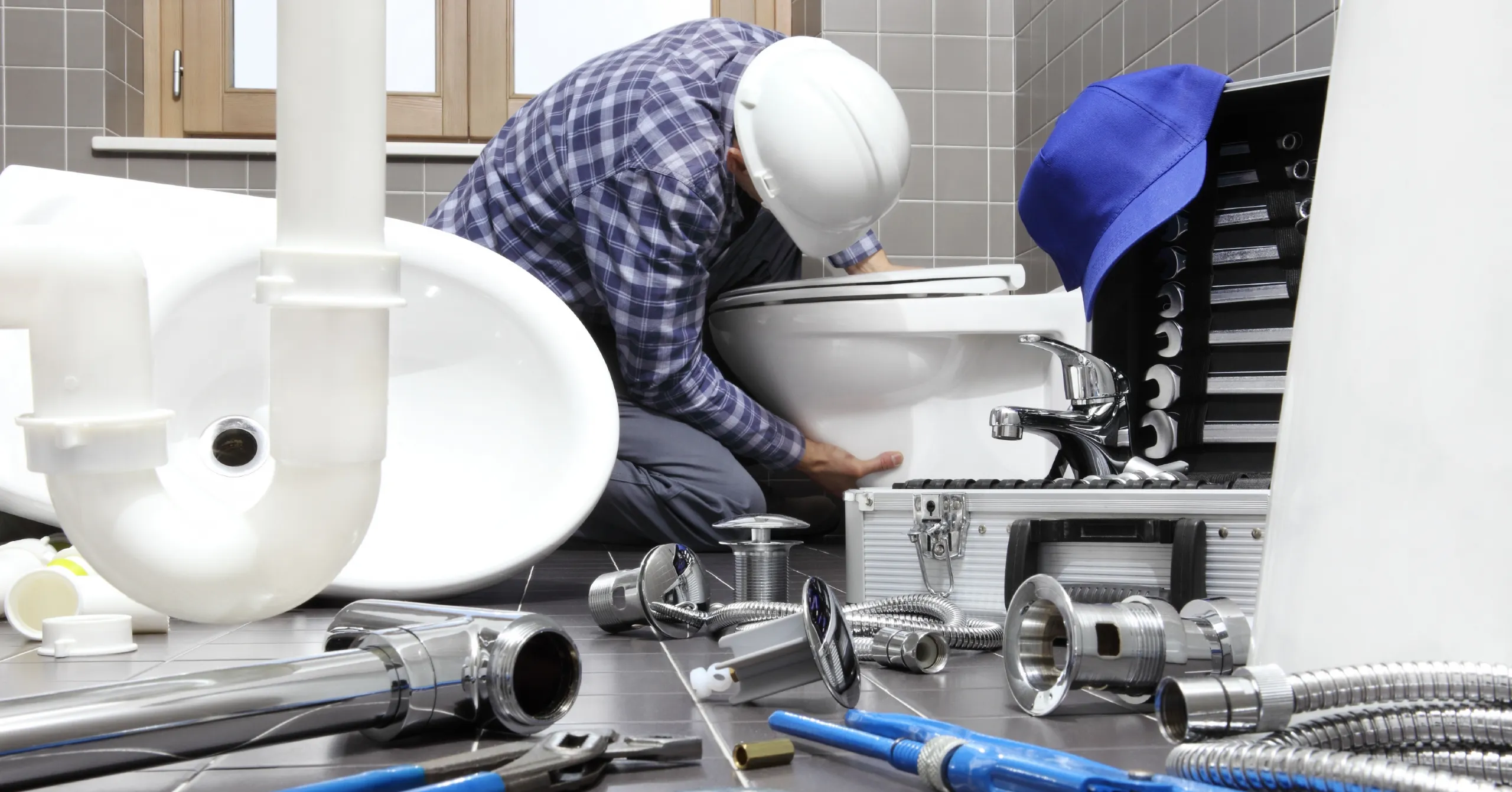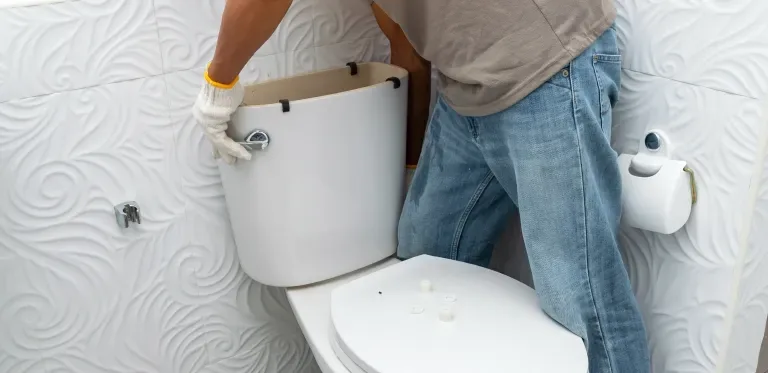A Definitive Guide To Toilet Repairs

A Definitive Guide To Toilet Repairs
Are you tired of dealing with a running toilet or a clogged bowl? Do you dread the thought of a leaking or weak-flushing throne? If you're a homeowner, chances are you've faced one or more of these common toilet problems. But did you know that neglecting these issues can lead to bigger problems down the line, such as water damage and higher utility bills? That's why toilet repairs are crucial for maintaining a functional and efficient bathroom.
However, not all of us are handy with tools or have the know-how to tackle toilet repairs on our own. That's where this all-in-one guide comes in handy. We'll walk you through everything you need to know to master the art of toilet repairs. From recognising common toilet problems to fixing them with easy-to-follow solutions, we've got you covered.
So why wait? It's time to take charge of your throne and become the ultimate toilet repair master. Let's get started!
How To Diagnose Your Toilet Issues
Toilet problems can be a major inconvenience and can even disrupt your daily routine. Knowing how to recognise common toilet issues is crucial in order to diagnose and fix them before they become bigger problems. Plus, you'll know whether a simple repair can be undertaken, or whether a total replacement is required.
Diagnosing toilet issues can be tricky, but there are some common signs to look out for. If your toilet is constantly running, the problem may be a faulty flapper or a problem with the fill valve. If your toilet is slow to fill up after flushing, you may have a problem with the fill valve or the water pressure in your home. If you notice water leaking around the base of the toilet, this may indicate a problem with the wax ring or the flange. By identifying the signs and symptoms of toilet problems, you can diagnose and fix them before they become bigger issues.
When Is Are Toilet Repairs Needed?
Toilet repairs are necessary when your toilet is not functioning properly. Some common signs that your toilet needs repairs include a constantly running toilet, a toilet that won't flush, or a toilet that is slow to fill up after flushing. You may also notice water leaking around the base of the toilet or a foul odour coming from the toilet. It's important to address these issues as soon as possible, as they can lead to bigger problems and higher water bills. If you need any assistance at any stage, be sure to contact a reputable plumbing team in your area.
Common Causes Of A Broken Toilet
A broken toilet can be caused by a variety of issues. One common cause is a clog in the toilet bowl or drain. This can be caused by flushing inappropriate materials down the toilet, such as sanitary products or excessive toilet paper. Another common cause of a broken toilet is a malfunctioning flapper, which can cause a constantly running toilet. A broken handle, chain, or lever can also cause issues with flushing.

How To Fix A Toilet: Solutions For Common Problems
Now that you know how to recognise common toilet problems, it's time to learn how to fix them. In this section, we'll go over four common toilet problems and how to address them. Before attempting to fix any toilet problems, it's important to turn off the water supply to the toilet and to have the necessary tools and replacement parts on hand.
Dealing With A Running Toilet
A running toilet is not only annoying, but it can also lead to higher water bills. To fix a running toilet, start by checking the flapper to see if it is closing properly. If the flapper is not the issue, then it may be the fill valve that needs to be replaced. In some cases, adjusting the float may also help stop the toilet from running.
Addressing A Clogged Toilet
A clogged toilet is a common issue that can be caused by flushing inappropriate materials down the toilet. To address a clogged toilet, start by using a plunger to try to clear the blockage. If the plunger doesn't work, try using a plumbing snake or auger to break up and remove the clog. Avoid using harsh chemicals as they can damage your toilet and pipes.
Fixing A Leaking Toilet
A leaking toilet can cause water damage and higher water bills. To fix a leaking toilet, start by checking the bolts and nuts that secure the toilet to the floor. If they are loose, tighten them to see if that stops the leak. If the leak persists, the wax ring or flange may need to be replaced.
Repairing A Weak Or Partial Flush
A weak or partial flush can be caused by a variety of issues, including a clogged toilet, a malfunctioning flapper, or a problem with the fill valve. To repair a weak or partial flush, start by checking the flapper to ensure it is not stuck open. If the flapper is not the issue, then it may be the fill valve that needs to be replaced. In some cases, adjusting the water level in the tank can also help improve the flush.
How To Replace A Toilet
While toilet repairs can often fix common problems, there may come a time when a replacement is necessary. When this happens, you'll need to be able to identify the need for a total replacement and you'll need to know which factors to consider when selecting the right toilet for your needs. While it's recommended that you enlist the help of a professional plumber to install your new toilet, so you may not need to know how to replace a toilet it pays to understand this process to ensure you know what to expect.
When To Consider A New Toilet
There are several signs that it may be time to replace your toilet. If your toilet is constantly requiring repairs or has frequent leaks, it may be more cost-effective to replace it. Older toilets may also use more water, which can lead to higher water bills. If you're looking to update the look of your bathroom, a new toilet can also provide a fresh and modern feel.
Choosing The Right Toilet For Your Needs
When choosing a new toilet, there are several factors to consider. The size of your bathroom, the height of the toilet, and the water usage are all important factors. You'll also need to choose between a one-piece or two-piece toilet and decide on the flushing mechanism. Dual-flush toilets are becoming more popular due to their water-saving features. Consider your budget as well, as toilets can range in price depending on the features and style.
Toilet Repairs: The Process Of Replacing Your Toilet
Replacing a toilet may seem like a daunting task, but with the right tools and steps, it can be done in a few hours by experienced professionals. First, turn off the water supply and flush the toilet to empty the tank. Disconnect the water supply line and remove the nuts that secure the toilet to the floor. Lift the toilet off the flange and remove any remaining wax. Place the new wax ring on the flange and lower the new toilet onto it, making sure it is level. Tighten the nuts to secure the toilet to the floor, and reconnect the water supply line. Finally, turn on the water supply and test the toilet to ensure it is functioning properly.

Take Charge of Your Bathroom Appliances Today!
By mastering the art of toilet repairs, you can save money on water bills, prevent water damage, and maintain a functional and efficient bathroom. From diagnosing common toilet problems to fixing them with easy-to-follow solutions, and even replacing your toilet if necessary, this all-in-one guide will offer you the necessary knowledge and tools to tackle toilet-related issues. However, it does often pay to enlist the assistance of experienced plumbers with expertise in the field, so be sure to call on these reliable providers for quality plumbing services when you need them most.